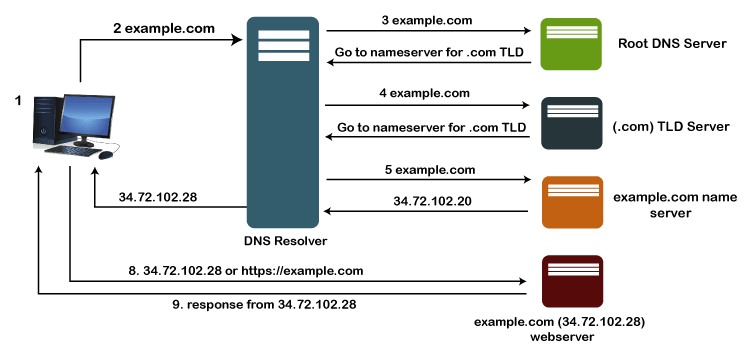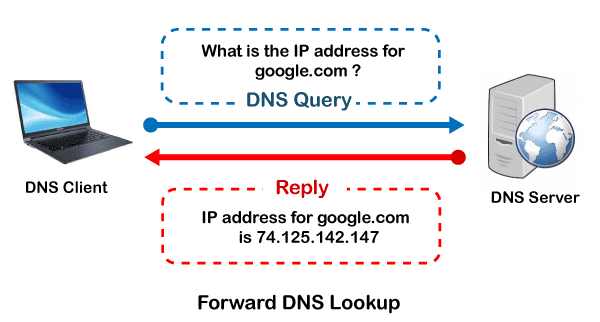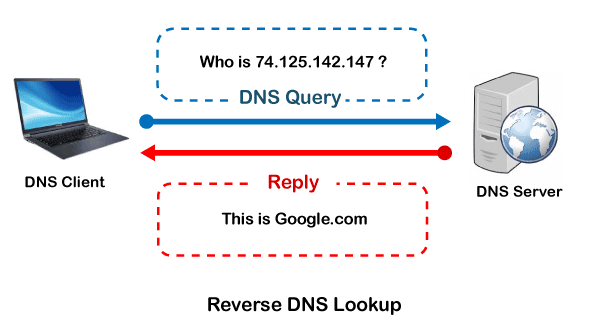DNS Lookup
DNS Lookup is a browser-based network tool used to find the IP address of a certain domain name. It displays DNS records showing publicly for the domain name being queried.
DNS Lookup allows you to use public DNS servers such as Google, Cloudflare, Quad9, OpenDNS, etc. Specify name server, Top-level domain name server, root name server, Authoritative name server, and other DNS servers for the query. Therefore, if you changed your web hosting or DNS records, those changes will reflect instantly. These DNS server IP addresses support IPv4 and IPv6.
To check that you have configured correct DNS records for your domain, use the DNS lookup tool to verify your DNS records and avoid any delay. The DNS records include A, AAAA, CNAME, CAA, DS, DNSKEY, MX, NS, PTR, SRV, SOA, TXT, and many more.
DNSSEC or Domain Name System Security Extensions creates a secure domain name system by adding cryptographic signatures in existing DNS records. By checking its associated signature, you can verify that a requested DNS record came from its authoritative name server and wasn't altered en-route to avoid a man-in-the-middle attack.
List of DNS Records Types
You can select any record to get all common DNS records for a domain from the following types of DNS records.
- A record:It is the most basic type of record, also known as address record. It provides an IPv4 address to a domain or sub-domain name. It points the domain name to an IP address.
- AAAA record:It maps the hostname to 128-bits IPv6 address. For a long time, 32-bits IPv4 addresses served the purpose of identifying a computer on the internet. But due to the shortage of IPv4, it created IPv6. The four AAAA are mnemonic to represent that IPv6 is four times larger than IPv4 in size.
- CAA record:Certification Authority Authorization record reflects the public policy regarding the domain's issuance of digital certificates. If no CAA record is present for your domain, any Certification Authority can issue an SSL certificate for your domain. However, by using this record, you can restrict which CA is authorized to issue your domain's digital credentials.
- CNAME record: Canonical Name record creates an alias of one domain name. The aliased domain or sub-domain gets all the original Domain DNS records and commonly used to associate sub-domains with the existing main domain.
- DS record:Delegation Signer record consists of the unique characters of your public key and its related metadata such as Key Tag, Algorithm, Digest Type, and cryptographic hash value called Digest.
- DNSKEY record: It is also known as DNS Key record,containing public signing keys such as Key Signing Key (KSK) and Zone Signing Key (ZSK). The DS and DNSKEY records serve to validate the authenticity of DNS records returned by the DNS Server.
- MX record: Mail Exchange records tell which mail exchange servers are responsible for routing the email to the correct destination or mail server.
- NS record:Name Server record points to the name servers to manage and publish the domain's DNS records. These are the DNS servers that are authoritative to handle any query related to the domain.
- PTR record: The Pointer recordpoints the IPv4 or IPv6 address to its machine's hostname. It provides a reverse DNS record or rDNS record by pointing an IP address to the server's hostname.
- SRV record:Service record indicates which specific services the domain operates and port numbers. Some Internet protocols such as the Presence Protocol (XMPP), Extensible Messaging, and the Session Initiation Protocol (SIP) often require SRV records.
- SOA record:The Start of Authority recordprovides essential information about the domain, such as identifying the master node of domain authoritative name server, an email of the domain administrator, the serial number of DNS zone, etc.
- TXT record: It allows the website's administrator to insert any arbitrary text in the DNS record.
- SSHFP record: It is also known as SSH Public Key Fingerprint. It has a resource record for publishing SSH public host key fingerprints in the DNS System to verify the host's authenticity.
- URI record: It is also known as Uniform Resource Identifier. It can be used for publishing mappings from hostnames to URIs.
How DNS Lookup Works
DNS lookup is a process by which an IP address is returned for a domain name by a DNS server. The DNS lookup can also return all the records associated with a domain name such as IP, IPv6 address or MX record, etc.

The request to DNS resolver is a recursive request, while all other requests are simple or non-recursive queries.
- Users open a web browser, enter com in the address bar, and presses Enter button.
- The request, for example.com is routed to a DNS resolver, which manages by the user's Internet service provider.
- The DNS resolver forwards the request, for example.com to a root DNS server.
- The DNS resolver again forwards the request, for example.com, this time to one of the TLD name servers for .com domains. The name server for .com domains responds to the request with the 2 or 4 name servers associated with the example.com domain.
- The DNS resolver chooses an example.com, the authoritative name server, and forwards the request for example.com to that name server.
- The website's name server looks in the example.com hosted zone for the example.com a record, to get the associated value, such as the IP address for a web server, 34.72.102.28, and returns the IP address to the DNS resolver.
- Finally, The DNS resolver for the ISP has the IP address that the user needs. The resolver returns that value to the web browser. The DNS resolver can store the IP address, for example.com.
- The web browser sends a request, for example.com using the IP address that it got from the DNS resolver. This is where the actual content is.
- The web server or other resource at 34.72.102.28 returns the web page, for example.com to the web browser, and the web browser displays the page.
Ways to DNS Lookups
There are two approaches to DNS lookups, the normal or forward DNS lookup, and the reverse DNS lookup.
1. Forward DNS Lookup
The forward lookup or simple DNS lookup is the most common approach to DNS. It is used to find out the IP address of a domain. People tend to find it difficult to remember long strings of numbers. Instead, it's easier to remember a domain name that uses words. However, electronic devices use streams of 1's and 0's to communicate.

The only way for one computer to communicate with another is by unique identification. The method identification used on the internet is by IP addresses.
2. Reverse DNS Lookup
A Reverse DNS Lookup is just an opposite sequence of a DNS lookup. Moreover, with a normal DNS lookup, you query the DNS or hostname to get the IP address. In a Reverse DNS Lookup, you query the IP address to find the hostname. Therefore, by entering the IP address into the Reverse DNS Lookup Tool, you can find the domain name associated with the corresponding IP.

For example, one IP address of Google.com is 74.125.142.147. Suppose you were to type this IP address in the Reverse DNS Lookup Tool. In that case, it will return the hostname of Google as listed in the database of the Address and Routing Parameter Area (ARPA) top-level domain of the internet.
|



 For Videos Join Our Youtube Channel: Join Now
For Videos Join Our Youtube Channel: Join Now









